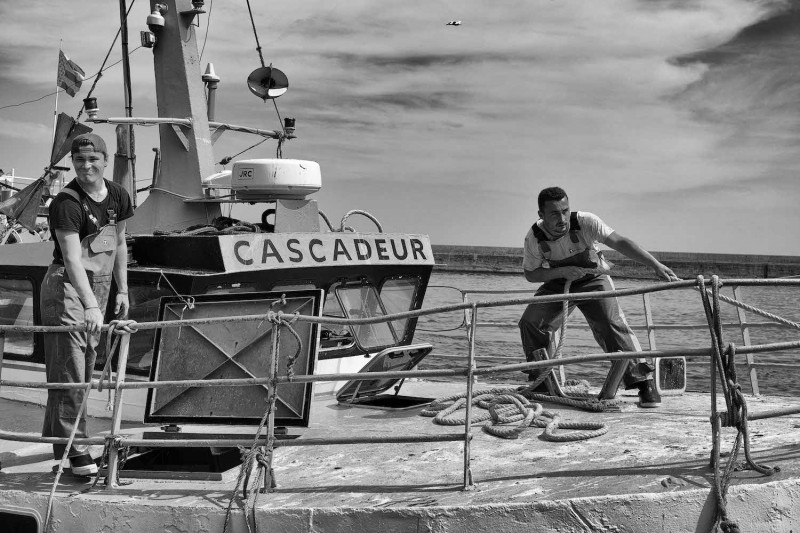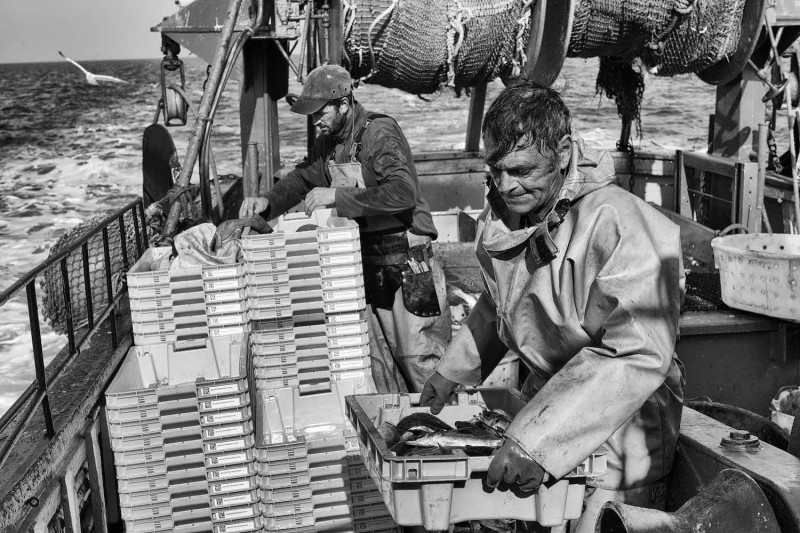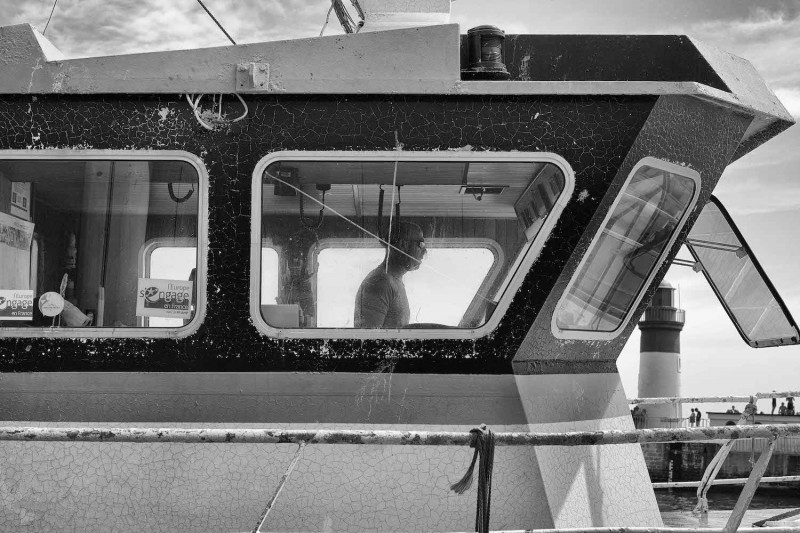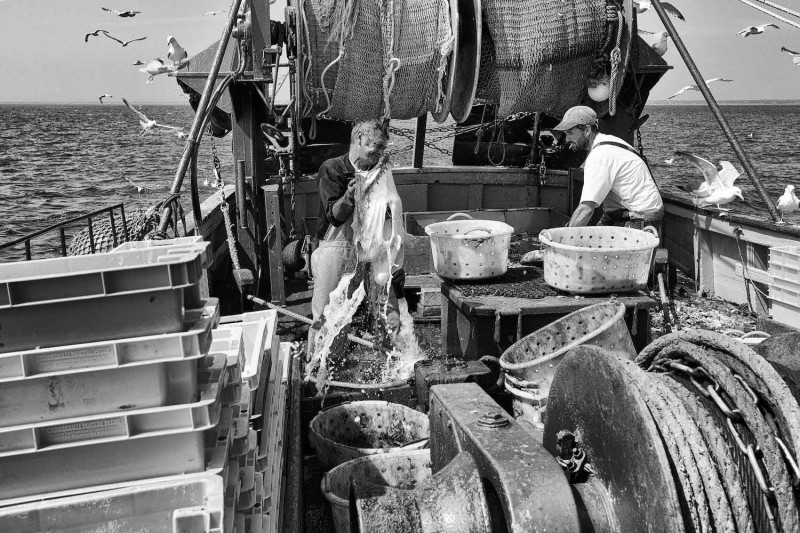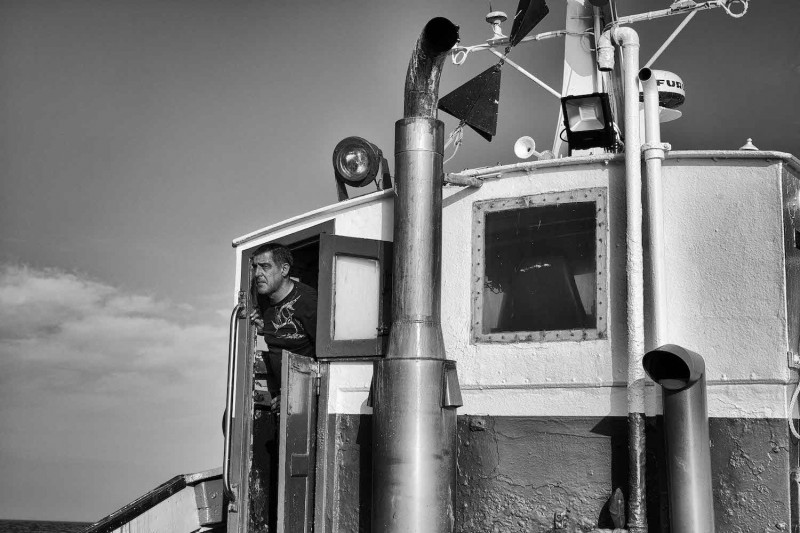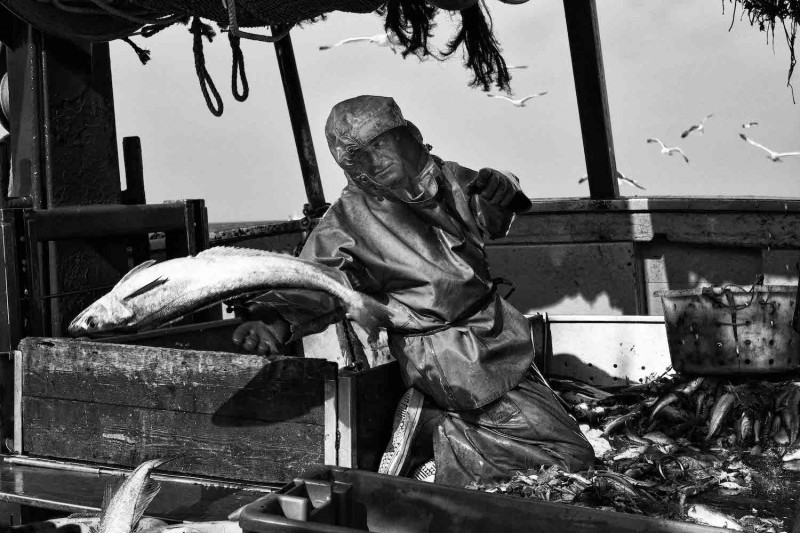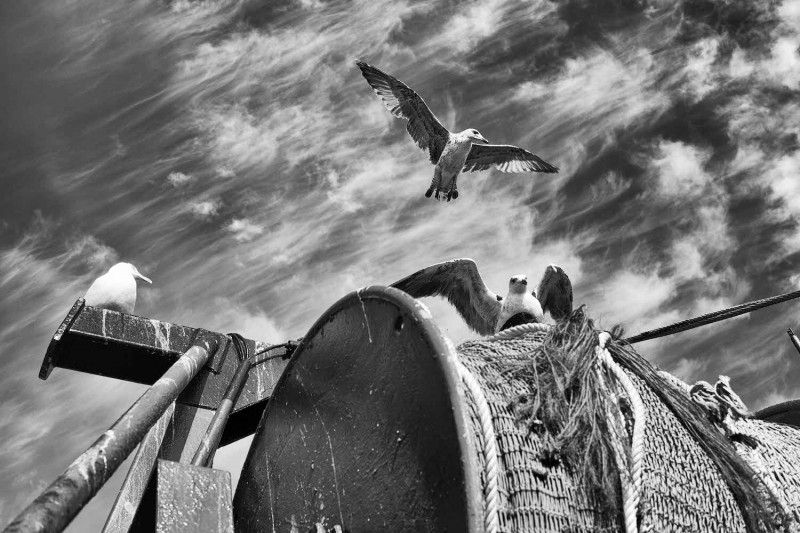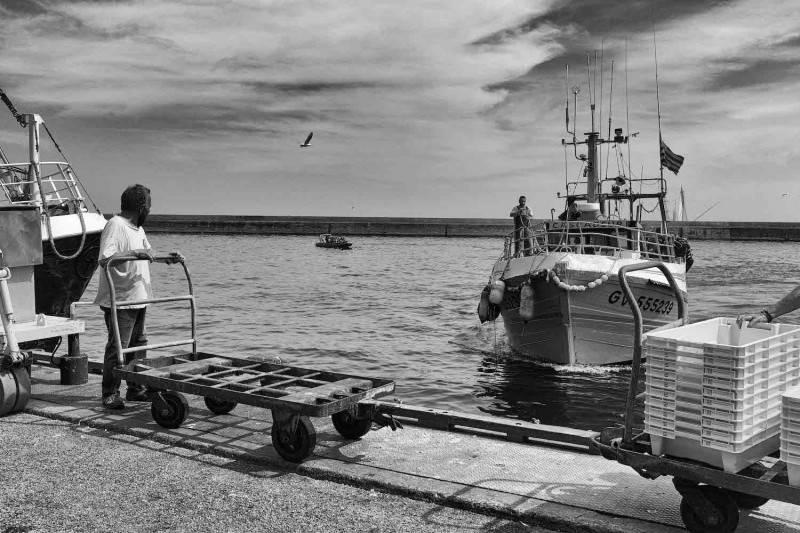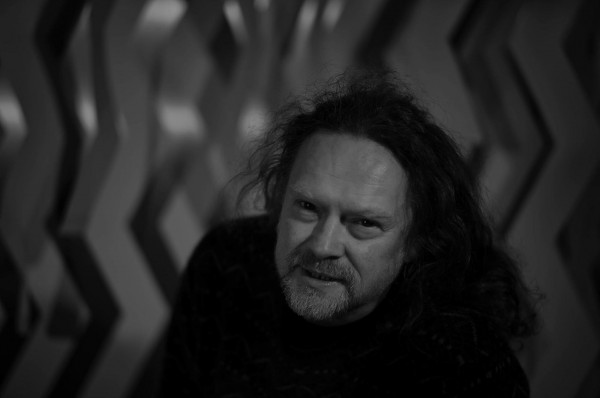Fishermen of Pays des Bigouden
Fishermen of Pays des Bigouden
Geert Verstrepen
May 9, 2022
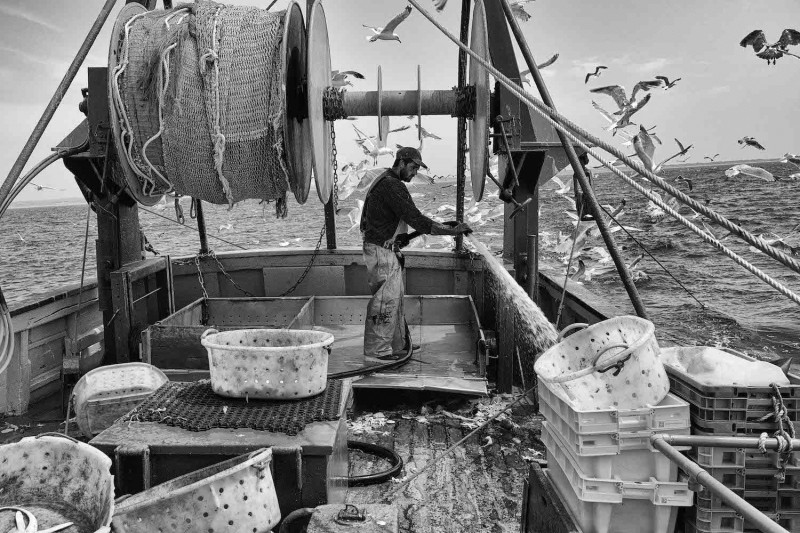
Geert Verstrepen: I don't get seasick easily. During my military service, I was a sailor on board a naval ship and was able to gain some experience at sea. I have experienced storms at sea. I think I can say that I have sea legs.
What was daily life and work on the fishing boat like?
I had to be on board at four o'clock in the morning at the latest. Because of my experience as a sailor and to prevent seasickness, I had to make sure I had eaten well before we left. I had a quick breakfast before boarding and at four o'clock sharp we left for the sea. The name of the trawler was Niagara – a 15.50 m wooden coastal boat –, and its three-man crew consisted on a captain and two sailors. After about 45 minutes of sailing and preparations, the fishing net was launched. Then we could rest in the bunks of the ship's hold. A few hours later, the first catch was brought in. Once on board, the catch was immediately sorted and then cleaned on deck. In the meantime, the fishing net was launched again. Once the fish had been cleaned and the deck hosed down, the sailors had time for a cup of coffee and something to eat. Meanwhile, the captain searched for fish-rich waters. The two sailors were very well matched. The work on board ran like a well-oiled machine. There was a great atmosphere on board. We arrived at the port around five o'clock in the afternoon. The fish had to be taken immediately to the fish market where it was auctioned to go to the customer.
Your series is titled 'Fishermen of Pays des Bigouden' – please explain where it comes from.
Pays des Bigouden is a well-known region in Brittany. The term "bigouden" emerged in 1833. It refers to an element of the headdress worn by the women of the Pont-l'Abbé region, a lace appendage extending from the top of the headdress, which was quite flat at the time. The people of Pays des Bigouden are proud of their culture. Survival for the fishermen is not easy. There are fewer and fewer boats. Finding suitable staff is not easy. Young people no longer want to do this heavy work.
Were there any tricky situations while photographing? Issues with salty water, low light conditions due to early morning trips I imagine, and so on?
Working on a fishing boat always involves danger. There is so much action when the fishing net is launched and when it is retrieved. The many chains and ropes on deck did not make it easy for me to move around on board and photograph. I also had to think of my own safety. Then there is the movement of the boat and I had to keep my balance all the time. At the same time, I also had to think about the safety of my camera equipment. The threat of sea water is particularly pernicious. Due to the limited size of the boat, I also had to constantly think about the composition of my photos. I had to be concentrated all the time. It was a very tiring day that I ended on a positive note. The friendship I received from these fishermen was incredible.
How did the Leica equipment perform?
My two cameras performed very well. I could use the M10 in particular very well, as we set out when it was still dark. Once it was light, I alternated between the two cameras. One armed with a 35mm and the other with a 50mm lens. Both cameras have their specific qualities, which I made full use of on this sea voyage. They were my perfect partners in capturing the lives of these fishermen.
Why did you take the pictures in black and white?
I've been fascinated by black-and-white photographs since I was a child. Colour distracts a lot. With my black and white photos, I wanted to focus on the hard work of these fishermen. I think I have achieved this. Colour photos would have given this reportage a completely different dimension. People would have looked at it differently.
Geert Verstrepen+-
Geert Verstrepen was born in 1968 in Belgium where he still lives. Inspired by black-and-white photographs since he was a child, he likes to take pictures of the things around him: architecture, landscape and the streets. More recently, his interest has turned to documentary photography: telling a story through photography is a challenge he enjoys taking on. His photos have already been published in various magazines and in a book, and he is the recipient of a number of awards. One of Verstrepen's dreams is to become a professional documentary photographer. More

